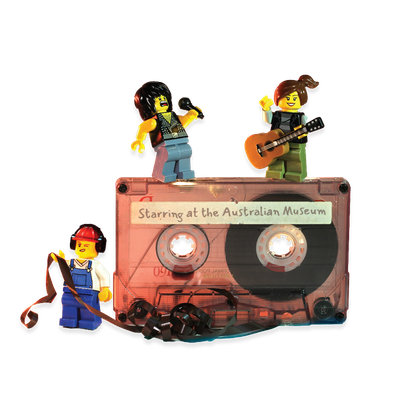Your search returned 41 results
By Page Type
By Tag
- All
- fish (966)
- blog (696)
- fishes of sydney harbour (401)
- First Nations (298)
- Blog (236)
- AMRI (169)
- archives (164)
- Eureka Prizes (146)
- Aboriginal and Torres Strait Islander (135)
- insect (126)
- Ichthyology (124)
- geoscience (109)
- minerals (102)
- climate change (99)
- podcast (94)
- Fish (91)
- Anthropology (89)
- International collections (80)
- Minerals Gallery (78)
- wildlife of sydney (78)
- Labridae (77)
- frog (74)
- gemstone (70)
- photography (66)
- history (64)
- Mollusca (60)
- gem (59)
- staff (59)
- Birds (56)
- Gems (56)
- Indonesia (56)
- education (56)
- shark (55)
- AMplify (54)
- people (53)
- earth sciences (50)
- exhibition (50)
- past exhibitions (50)
- Gobiidae (48)
- sustainability (46)
- Pomacentridae (45)
- Serranidae (44)
- lifelong learning (42)
- science (42)
- Earth and Environmental Science (41)
- Syngnathidae (41)
- Ancient Egypt (40)
- Bali (40)
- bird (40)
- dangerous australians (40)
-
Metamorphism
https://australian.museum/learn/minerals/shaping-earth/metamorphism/The word metamorphism comes from Greek and means 'change of form'. Metamorphic rocks are pre-existing rocks whose mineral composition and/or texture has been changed by processes within the Earth.
-
Earthquakes and tsunamis
https://australian.museum/learn/news/blog/earthquakes-and-tsunamis/What causes earthquakes and why do tsunamis often follow a large earthquake?
-
Mineral properties
https://australian.museum/learn/minerals/properties/Minerals can be identified using a number of properties. These include physical and chemical properties such as hardness, density, cleavage and colour, crystallography, electrical conductivity, magnetism, radioactivity and fluorescence.
-
Earth's resources
https://australian.museum/learn/teachers/at-the-museum/earths-resources/Students will explore the Museum's diverse rock and mineral collection, engage with First Nations peoples' geologies and investigate the future of non-renewable resources.
-
Metamorphic processes
https://australian.museum/learn/minerals/shaping-earth/metamorphic-processes/Most minerals are only stable at particular temperatures and pressures, so changes in these result in the formation of new minerals.
-
The Solar System
https://australian.museum/learn/minerals/shaping-earth/the-solar-system/The Solar System is dominated by the Sun and the planets that orbit around it.
-
Mineral groups
https://australian.museum/learn/minerals/what-are-minerals/mineral-groups/Minerals can be classified into distinct groups based upon similar atomic structure and/or chemical composition.
-
Jenolan Caves Minerals
https://australian.museum/learn/minerals/shaping-earth/mineralogy-collection-jenolan-caves-minerals/The Jenolan Caves are one of the premier tourist attractions of New South Wales. Nine caves are regularly shown to visitors, but several hundred of various sizes are known from the area.
-
Types of metamorphism
https://australian.museum/learn/minerals/shaping-earth/types-of-metamorphism/There are several different types of metamorphism, including dynamic, contact, regional, and retrogressive metamorphism, that form and shape rocks.
-
Lavas
https://australian.museum/learn/minerals/shaping-earth/lavas/One of the products of volcanic eruptions is lava. Lavas vary widely in composition depending upon their original source magma.
-
Discover more
2025 Australian Geographic Nature Photographer of the Year
Special exhibition
Free entry
Now open -
Discover more
Unfinished Business
Special exhibition
Free entry
Now open -
Discover more
Wansolmoana
Permanent exhibition
Free entry
Open daily -
Find out more
Burra
Permanent kids learning space
Free entry
10am - 4.30pm![]()
-
Discover more
Minerals
Permanent exhibition
Free entry
Open daily![]()




